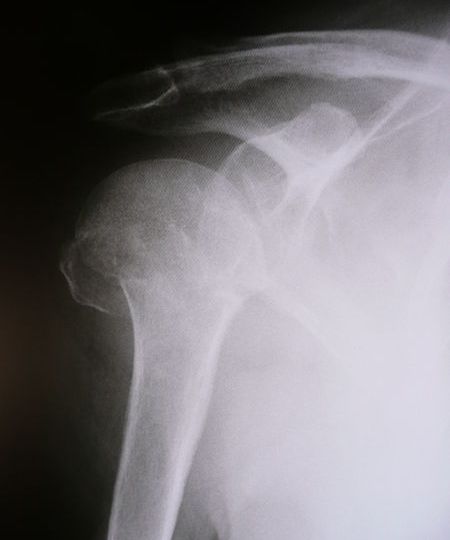
These injuries are more commonly referred to as shoulder fractures.
In fact, proximal humerus fractures represent the majority of fractures in the area around the shoulder, including the scapula. Medical literature refers to collarbone injuries as clavicle fractures, and these are a different injury.
Proximal Humerus Fractures: A Closer Look
The humerus is the official name for the long bone in the forearm. In its upper end, also known as the proximal end, the humerus has a large hemispherical head which articulates with the shoulder blade to form the shoulder joint. This is also known as the gleno-humeral joint. The shoulder is the most mobile joint of the body and allows us increased reach across multiple planes. Loss of shoulder function after an accident can mean severe impairment to a person.
When we are younger, a trip or fall incident usually results in minor injuries. However, as we age, even a fall from an upright position could cause a fracture. Fractures of the proximal humerus are the third-most common of the so-called fragility fractures, following hip and wrist fractures.
Great advances in orthopaedic technology have led us to improve the treatment of hip and wrist fractures. Yet, proximal humerus fractures remain one of the most challenging injuries for orthopaedic surgeons. The shoulder has a complicated anatomy. Using conventional metal screws to repair a fracture seldom works properly because the bone is too soft.
As a useful analogy, one would never use a regular screw on drywall to hang a valuable heavy piece of art, because the screw would pull out of the drywall. And, just as conventional screws fail to hold to drywall, so do conventional surgical screws fail to hold to the soft bone of the humeral head. The construction industry has successfully created specialty screws for drywall.
The orhtopaedic device industry failed to develop a better screw until TOBY came along.
TOBY Orthopaedics – A More Elegant Solution
It is remarkable that surgeons continue to use conventional plates and screws in fixing proximal humerus fractures when the reported rates of failure are close to 50%. The failure rates are so high because the bone is too soft for the screws being used. In many instances, the screws simply erode through the bone and into the joint, destroying it.
Alternatively, the screws simply pull out of the soft bone and the fracture repair falls apart. Conventional plate and screws cannot hold the fracture fragments well enough or long enough for the fracture to heal. The fracture may never heal (so-called non-union) or the head of the humerus may simply die (a process called avascular necrosis).
It has taken TOBY Engineers and Doctors an enormous amount of work to introduce a better screw with which to fix the soft bone of the proximal humerus.
Pantera is TOBY’s proximal humerus fracture system. In Pantera, we introduced several unique design features that are revolutionary and meant to fully address the challenge of repairing the soft bone in the shoulder. We introduced a screw within a screw, the “cross-screw” which allows the surgeon to create rebar within the bone and minimize the failure of the repair. In Pantera, we also introduced a suture clip so the surgeon can suture tendons to the plate, another first in the industry.
Get in touch with TOBY Orthopaedics and discover orthopaedic implants to improve your quality of living, today!

